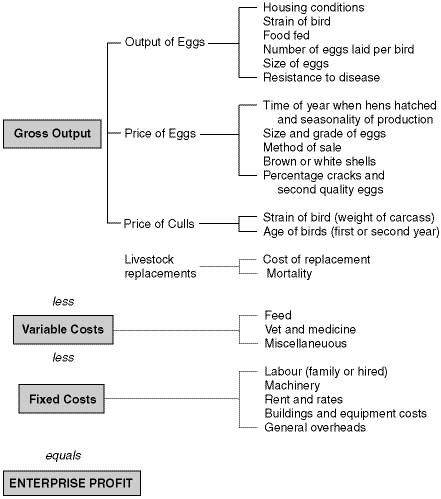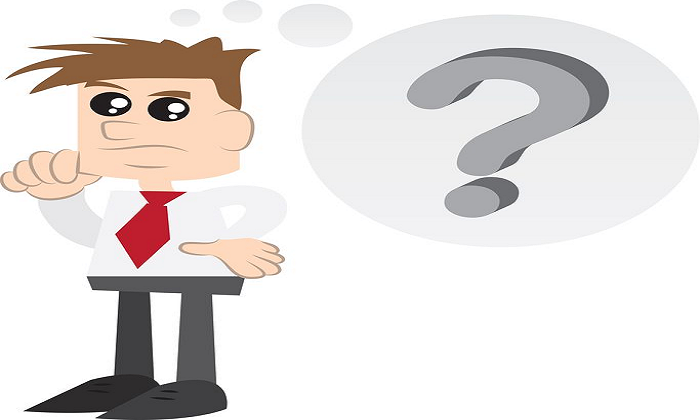Contents:


It affects the product strategy by branding, policies, maintenance, etc. Provide assortments by stocking large quantities of different items manufactured by various companies. Cost, complexity, perishability, and whether the product is standard or custom-made all have a factor in determining the distribution route. Catalogue sales are commonly observed in the beauty segment, for example, in brands like Brazilian Natura and Avon.
1) Direct channel or zero level channel and 2) Indirect channel. Longer routes may be utilized if the client is in the consumer market, whereas shorter channels may be used if the customer is in the industrial industry. Financial strength, management expertise, and the desire for control all play a role in determining which path the product will follow before reaching the final consumer. It’s one of the few strategic decisions that can make or break a business. It is imperative to know the difference between direct and indirect distribution.
There are a variety of ways to do this, including opening retail stores, hiring salespeople to go door to door selling the product, or starting a mail-order business. A company’s channel decisions directly affect every other marketing decision. Marketers that distribute products through mass merchandisers such as Wal-Mart will have different pricing objectives and strategies than will those that sell to specialty stores. Distribution decisions can sometimes give a product a distinct position in the market. The choice of retailers and other intermediaries is strongly tied to the product itself. Manufacturers select mass merchandisers to sell mid-price-range products while they distribute top-of-the-line products through high-end department and specialty stores.
Investigating the Impact of COVID-19 Vaccines on Liver Function … – Cureus
Investigating the Impact of COVID-19 Vaccines on Liver Function ….
Posted: Thu, 23 Mar 2023 07:00:00 GMT [source]
Therefore, there is a need to ultimately bridge the gap between these two. Though the ultimate aim of a producer is that a product should reach the consumer, but it is more important that it reaches more effectively and efficiently compared to the competitors. In this chapter, we will be discussing the meaning and functions of distribution channels and factors influencing the choice of a particular channel. Intermediaries channel of distribution intermediaries such as wholesalers and retailers are involved and they are responsible for selling the products. In an indirect distribution channel, you can outsource all the management from the distribution to experts, and ultimately focus on the essential business processes.
Get the latest industry news, best practices, and product updates!
First of all, customers can now access media content products like movies, music, television shows, books and audiobooks, magazines, and newspapers in seconds via digital distribution. Is one where companies work with one or more distribution partners or intermediaries to bring products and services to customers. In all of the above channels you might have seen one common thing that is flow. In every type of channel, channel flows from producer to the intermediate to consumer or user. But due to the technology, another flow has been made possible.
As discussed before, distribution channels mainly have direct and indirect channels. The term ‘distribution’ refers to the process of distributing something to its intended recipients. A distribution channel is a network of businesses or intermediaries that a product or service passes through before reaching the final buyer or end consumer.
Can be better performed when the channel members are specialists and not generalists. 2.To fulfill customer’s requirements by providing quality rich services. Lapaas Digital is an overall end to end solution for startups and businesses. We are helping entrepreneurs and founders from the past 13 years with Business model consultation, Marketing, Development and Strategic advice to scale and become profitable. Break bulk in order to offer smaller quantities tailored to individual customer needs.
These functions focus on proper assortment and storing goods in the right place. Channel members must ensure that the stored goods are transported on time so customers can access them. Channels of distribution smoothen the flow of goods by creating possession, place and time utilities. They facilitate movement of goods by overcoming various barriers. The length of the channel of distribution depends on the number of intermediaries. Offering products in the form of assortments or packages of items useable or acceptable by the consumers.
The firm’s sales force and communications decisions depend on how much persuasion, training, motivation, and support its channel partners need. Whether a company develops or acquires certain new products may depend on how well those products fit the capabilities of its channel members. Three-level channel of distribution includes an agent in addition to the retailer and wholesaler who helps sell goods. These agents prove helpful when goods need to be moved rapidly into the market immediately after the order is placed.
Unit 4 Topic: Channels of Distribution
Your distribution channel should be aligned with all such details. If not, you may face logistics issues, leading to product delays, and ultimately, damaging your customer relationship. When the matter comes to distribution channels, one significant facet to consider is the cost. You should record all costs and inspect whether the benefits of the channel you chose are justifiable or not. In this distribution channel, the end consumer is accountable for returning the product.

Non-perishable items, such as soaps and toothpaste, require longer distribution networks because they must reach customers in a wide geographic area. The corporation authorizes sales to a specified group of intermediaries who are responsible for selling things to final customers through selective distribution. The choice of these distribution channels depends on the overall business objectives and configuration. But one question arises–what to do when consumers want to return products to manufacturers? Well, consumers have to depend on the reverse distribution if they have received defective products or wish to return clothes, shoes, etc. purchased online . The marketing and sales expenses are shared among the parties.
What are functions of retailer in the distribution channel?
This is because your product should be sold in the region where your target audience exists, specifically if your product belongs to a particular market niche. Now you already know various types of intermediaries and distribution channels. But this knowledge will be useless if you don’t know how to choose the appropriate channel of distribution. So, find below the factors that simplify your choice of distribution channel.
It’s also much more difficult to achieve a wide reach geographically or across various market segments without the help of intermediaries. Your marketing approach mainly depends on the type of business you are running and your target audience. See, different marketing channels bring multiple advantages, but most businesses can find a way to use multiple channels in their marketing strategies to accomplish their business goals. A marketing channel is a system that ensures the distribution of the product from the producer to the consumers by passing it through multiple levels.
All functions of channel of distribution strategies that revolve around the product include distribution channels as a key component. They assist businesses in reaching out to their customers in order to increase revenue and brand awareness. Most producers use intermediaries to bring their products to market.
A smaller sales team is released from predictable tasks based on customer data that software can perform to nurture the kind of meaningful relationships with customers that only humans can achieve. Dual Distribution Channel is another type of marketing channel. It’s a less conventional channel that helps wholesalers to reach consumers using more that one distribution channel. It is one of the most widely used distribution channels for consumer goods.
The first channel is the longest in that it includes all four, from producer to the end consumer. The wine and adult beverage industry is a perfect example of this long distribution channel. In this industry, thanks to laws born out of prohibition, a winery cannot sell directly to a retailer. It operates in what is known as the three-tier system, meaning the winery is required by law to first sell its product to a wholesaler, who then sells to a retailer. Whether your intermediaries are retailers, resellers, distributors, or wholesalers, it’s essential to know their location.
Two-level distribution is used for goods that are durable, standardized, and relatively inexpensive, and whose target audience is not limited to a specific geographic area. The goods are transferred from the manufacturer to the customer via two intermediaries in this distribution channel. Wholesalers and retailers serve as a link between manufacturers and consumers in this scenario.
Meet customers where they want – McKinsey
Meet customers where they want.
Posted: Thu, 22 Sep 2022 07:00:00 GMT [source]
This means that buyers will only be able to purchase the items from select retail shops. When a manufacturer chooses exclusive distribution, they agree to sell a product exclusively through that retailer’s storefront. Companies dealing with vast and complicated markets can benefit from hybrid channels. With each additional channel, the company improves its sales and market coverage, as well as its ability to tailor its products and services to the unique needs of various consumer segments. Many businesses have recently relied on a single channel to sell to a single market or market niche.
These things don’t usually demand a lengthy purchase choice including extensive study by the consumer. Rather, these are everyday purchases that require very little work to sell. Indirect selling occurs when a manufacturer uses one or more intermediaries to sell and distribute their product to customers.
It is a very useful tool for managing and is essential for developing a productive and strategic marketing strategy. Assembling, storage, sorting, grading, packaging, and transportation are all examples of logistical functions. This is to ensure that goods arrive at the proper moment on the market and can be sold to customers quickly. These include functions such as post-purchase service, maintenance, finance, information distribution, channel coordination, and so forth. Customers’ purchasing habits have an impact on distribution channel selection.
The flow of three-level channels of distribution is—Manufacturer to Agent to Wholesaler to Retailer to Customer. In direct sales distribution channel strategy, brands can build honest relationships with end consumers. They can respond to product performance reviews and customer feedback.
1.To increase the availability of the product to the potential customers. All of them are mentioned below and a bit of knowledge about them. It is a channel in which consumer selects or order products from a printed or online catalog.
Distribution channels perform a number of functions that make possible the flow of goods from the producer to the customer. Though the type of organization that performs the different functions can vary from channel to channel, the functions themselves cannot be eliminated. They make products available when, where, and in the sizes and quantities that customers want.
- Make sure to assess intermediaries’ reputation, market involvement, and performance.
- The third important function of the intermediaries is creating assortment.
- To begin, you need to know that a distribution channel reflects the interaction between a manufacturer and a customer.
- First of all, customers can now access media content products like movies, music, television shows, books and audiobooks, magazines, and newspapers in seconds via digital distribution.
- Intermediaries often provide customer services such as offering credit to buyers and accepting customer returns.
Several organizations have recently embraced multi-channel distribution systems, often known as hybrid marketing channels, as a result of the development of client segments and channel options. While a distribution channel can sometimes seem endless, there are three main types of channels, all of which include a combination of a producer, wholesaler, retailer and end consumer. For those firms who sell software and tech products, the internet functions as the intermediary in the distribution channel. The consumer simply needs to download the material to gain access.
- The choice of these distribution channels depends on the overall business objectives and configuration.
- Is one where companies work with one or more distribution partners or intermediaries to bring products and services to customers.
- Though the type of organization that performs the different functions can vary from channel to channel, the functions themselves cannot be eliminated.
- Direct channels are employed when the nature of the product is more technical and the consumer may demand direct interaction with the manufacturer.
Unlike direct distribution, the indirect distribution channel strategy doesn’t demand start-up costs. Also, it is not required to select infrastructure components, like vehicles, staff, and warehouses, to begin distributing. You will save time, money and effort otherwise spent on establishing new infrastructure. Companies using the direct sales method of distribution own complete control over how their product is marketed and sold.
